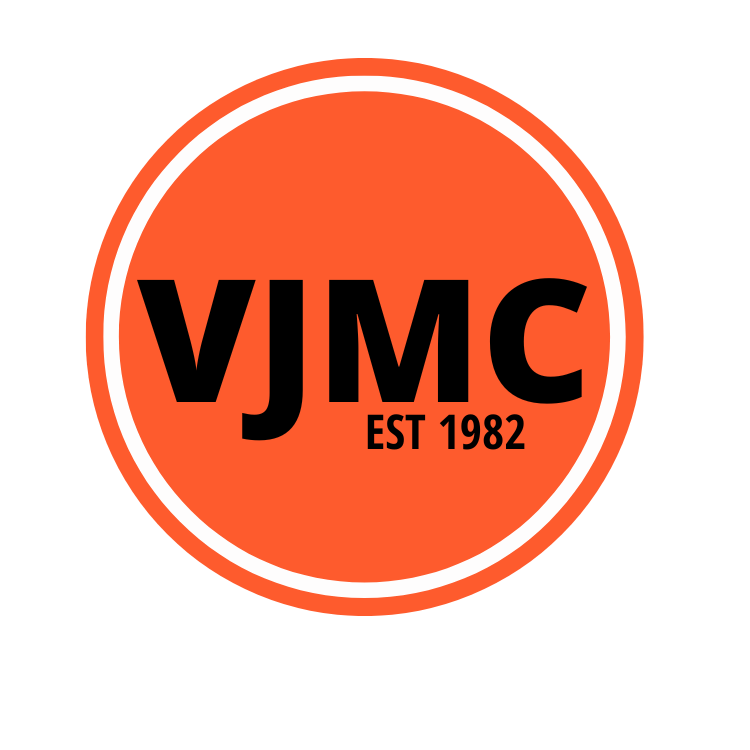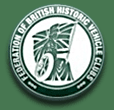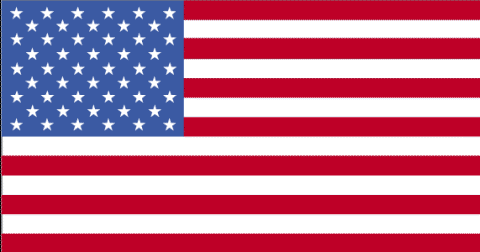Japanese
Motorcycle Histories - Bridgestone
Bridgestone Cycle Company
A Potted History
by Graham Weeks
Originally appeared in the Vintage Japanese Motorcycle Club Newsletter vol. 19, nos. 2 & 3 (Apr & Jun
1996). Reprinted without permission.
The Bridgestone Bicycle Manufacturing Company was founded in 1945 by Soichiro Ishibashi, the company name being
taken from a literal translation of his name in English -- Ishi - stone, Bashi - bridge. At the time, he was
running a trading company dealing with the import and export of automotive parts. There was a considerable demand
for cheap private transport in Japan after the war, and Ishibashi decided to enter the field of two-wheeler
manufacture.
He started producing bicycles in 1946, and within 3 years was looking into manufacture of powered cycles, such
machines being much in demand in post-war Japan. In 1949, the company was renamed the Bridgestone Cycle Company,
and in the following year an agreement was signed with Fuji Seimitsu Jogyo (Fuji Precision Engineering Company,
today part of the Nissan Motor Co.) to supply small 'slip-on' power units to fit BS bicycles. These were initially
sold separately from the bicycles, but in 1952 the first complete Bridgestone motorized cycle was made available.
Known as the BS-21 "Bambi", this comprised a small 26cc two-stroke unit fitted over the rear wheel of a BS
bicycle, with friction drive onto the rear tyre. The machine was later stretched to become the BS-31
(38.5cc) and the BS-41 (49cc), all using standard BS bicycles of various types. These machines sold well,
and helped to establish the Bridgestone reputation.
The first recognizable motorcycle was produced in 1958. This was the BS "Champion" range, a contemporary
pressed-steel frame motorcycle with a 50cc fan-cooled two-stroke engine and three-speed gearbox. The 1962 version
of this machine (the Champion-III) was later sold in the U.S. as the Bridgestone "Super 7", along
with a step-through framed version known as the "BS-50 Homer".
Exports to America started in 1963, via Rockford Motors of Rockford, Illinois. The machines were initially sold
through the Sears-Roebuck and Montgomery-Ward catalogue stores chain, and through outlets in hardware and sporting
goods shops across the U.S.A. Small-scale exports to other countries followd, the bikes reaching the U.K. market in
early 1968.
"Please correct the myth where Bridgestones were sold. Wards sold Benelli, Sears sold [Gilera] and Puch, and
Aldens of Chicago sold the Bridgestone 7 and a small 85-88CC Kawasaki or Omega. I keep seeing these history
articles that say BS was sold through Sears or Wards." --John Cressy, Exeter, NH; 01-Jan-2000
In the early Sixties, the Japanese motorcycle industry was going through a tough period, and a number of the
major manufacturers were destined to close. Bridgestone were able to survive, and in fact benefited from an influx
of fresh engineers and designers (notably ex-Lilac and Tohatsu people) who transferred to BS when their original
employers went bust. The outcome of this was a range of new models from Bridgestone, all powered by disc-valve
engines. This started with the BS-90 in 1964, followed in 1965 by the BS-50 and BS-175, and by
the BS-350 two years later. The Lilac influence can be seen in the styling of these models. Compare the 90
and the 175 Bridgestones with the late model Lilac twins and the family line is evident. The Tohatsu expertise with
two-stroke engines enabled Bridgestone to design modern state-of-the-art motors which gave good performance with
reliability. These new disc-valve engines were to last for the next eight years without major modifications, and in
fact were still in production at the close of the company.
During this period, the development department produced a number of one-off and experimental machines, including
a 125cc Twin with enclosed front disc brake (which was later stretched to become the BS-175 Dual Twin with
convential 2-ls brake), a 250cc motocrosser which won its class in the 165 Japanese National Motocross Championship
in the hands of a factory team, and several 50cc and 125cc single-cylinder prototypes which never reached the
production stage.
On the competition front, Bridgestone supported the Japanese National Road Racing Championship, running factor
teams in both the 50cc and 90cc classes. Just to make sure that the BS name didn't go unnoticed, tuning kits were
also made available to private owners in limited numbers to modify standard 50cc and 90cc road bikes to full racing
specification. During 1964 and 1965, Bridgestone were the most successful marquee in these two classes. The
American importers, meanwhile, had encouraged the factory to produce limited numbers of race-tuned machines to
compete in American enduro and dirt racing, and these factory racers appeared in 1965 and 1966 as the 90, 100
and 175 'SR' series, each based on the corresponding road bikes. The 'SR' production racers were to enjoy
considerable success in the hands of many American riders on both dirt and tarmac.
In 1965 the factory race department had designed the EJR-1 50cc water-cooled twin. This machine was very
similar to the all-conquering Suzuki Grand-Prix competition in 1967. The 1966 EJR-2 was much improved, and
an entry was made fro the Isle of Man TT that year -- following in the footsteps of Messrs. Honda, Yamaha and
Suzuki. Unfortunately, the 1966 TT was delayed by a seamen's strike, and the BS team were unable to meet the new
date. Instead, the three EJR-2 machines were demonstrated and tested at several circuits in Europe -- Brands Hatch
included -- and were entered for the Dutch TT at Assen.
In the race the bikes were ridden by Tommy Robb, Jack Findlay and Isao Morishita, and achieved creditable 5th,
6th and 9th places, but were still well behind the Suzuki twins which had greatly improved in the intervening
period. The expense of running a full-scale GP team, along with a declining interest in motorcycle production from
the top brass in Tokyo, led to the closure of the race team at the end of 1966. The tiny twins themselves were,
fortunately, not consigned to the crusher. At least two bikes still exist -- 1965 and 1966 bikes are on display in
the Fuji Motor Museum in Japan, the 1966 bike being on loan from Ken Suzuki, who was race manager for Bridgestone
at the time.
Back in Japan, the commercial success of the motorcycle division was beginning to cause its own problems. The
production line had shared premises with the tyre company at the Ageo plant near Tokyo since 1949. Now both the
tyre and motorcycle divisions needed to increase their production to meet consumer demand, and there simply was no
room for expansion in the existing factories. The decision was made that the tyre company should be alloted
increased factory space at the expense of the motorcycle line.
The motorcycle side of Bridgestone had always been run as somewhat of a sideline, with profits being ploughed
back into the general company coffers rather than being used for the design and development of new salable
motorcycles. Much of the development which went on was concerned with one-off racing and competition machines. The
new production models which appeared in the late Sixties were either cosmetic updates (the 175 Hurricane and the
350 GTO Street Scramblers), or simply overbored versions of existing models (the BS 100 and BS 200
ranges). The only major new models produced during this period -- the BS 100GP and BS 100 TMX -- used
the over-bored BS 90 engine in a chassis which was virtually a scaled-down version of the BS 175 Dual Twin.
In America, the growing environmental lobby was posing a serious threat to future sales of two-stroke engined
vehicles, and this of course was a major export market for Bridgestone. Also, the Bridgestone Tyre Company were
suppliers of O.E. tyres to the other Japanese motorcycle manufacturers, and it has been suggested that these firms
may not have been too keen to carry on buying their tyres from a rival motorcycle maker when there were other
sources available. Whatever the reasoning, Bridgestone decided to close the motorcycle manufacturing division in
1970/71. The dealer and sales network in the U.K. had already gone by then, and the demise of the network in other
countries swiftly followed.
The manufacturing rights and tooling for the 60cc and 100cc range of singles was sold to BS Tailung of Taiwan.
This company -- no connection with the original Bridgestone Cycle Company -- continued to build trail and
mini-bikes for the U.S. market, using the Bridgestone engines in newly-designed cycle parts. They were sold in
America until 1975 by Rockford Motors (the old BS importers) as the Rockford "Chibi", "Taka" and "Tora".
With the closure of the Taiwan production line in the mid-seventies, the family line of Bridgestone motorcycles
finally came to an end. The BS name is nowadays associated with tyres and bicycles, but a significant number of
Bridgestone motorcycles still exists in the U.K., U.S.A., and Australia, and their owners are keen that the marquee
should not fade away and should be more than just a memory from years past.
Submitted by Graham Weeks through the Bridgestone Registry.
| 
























